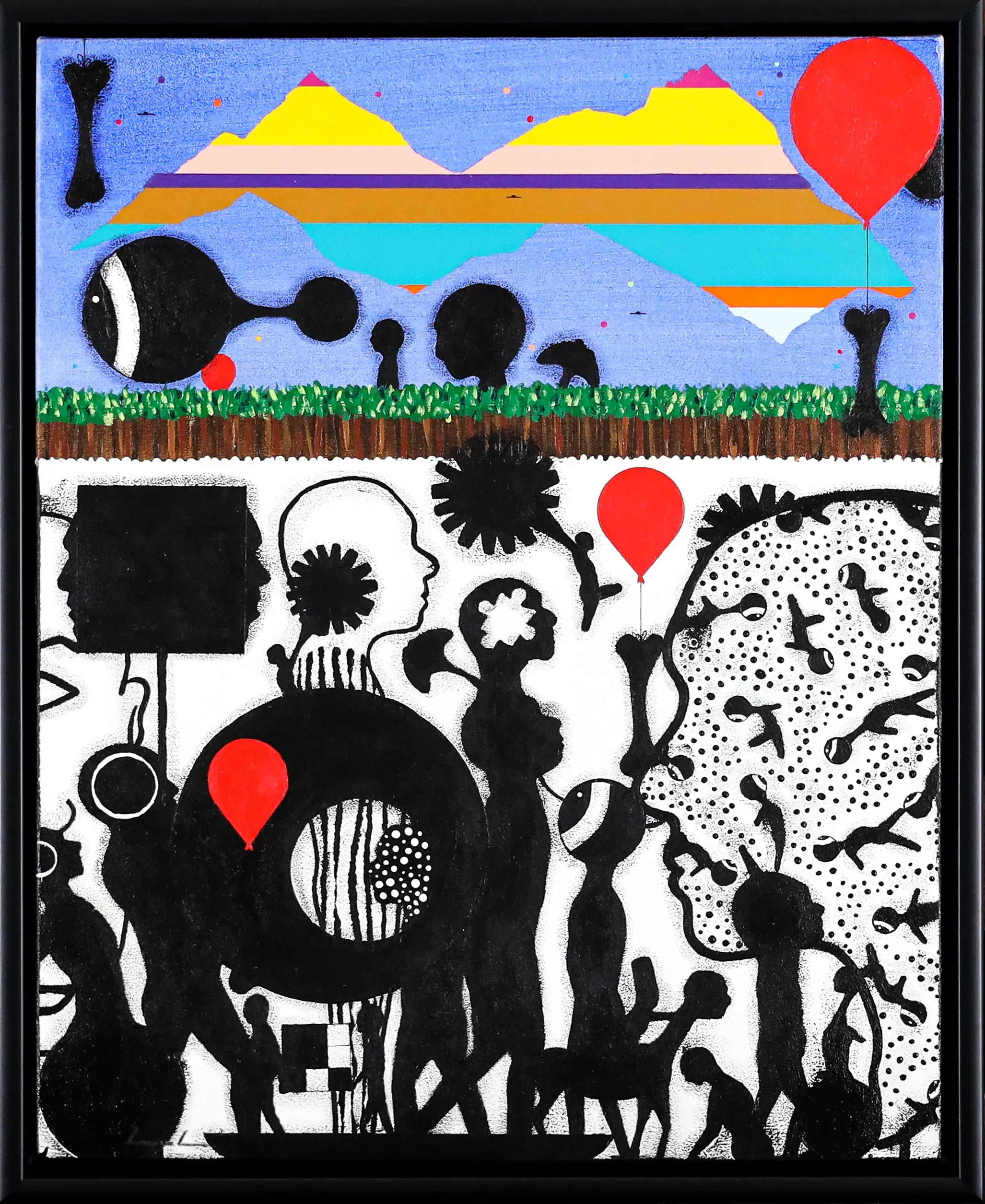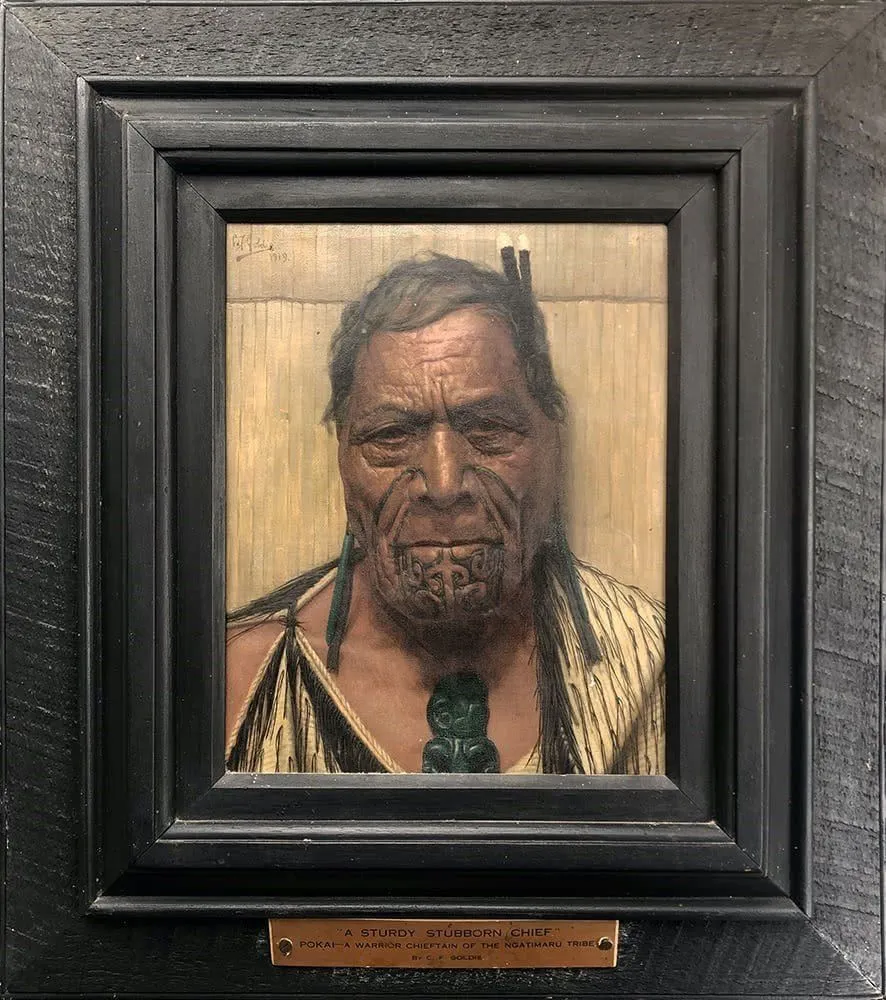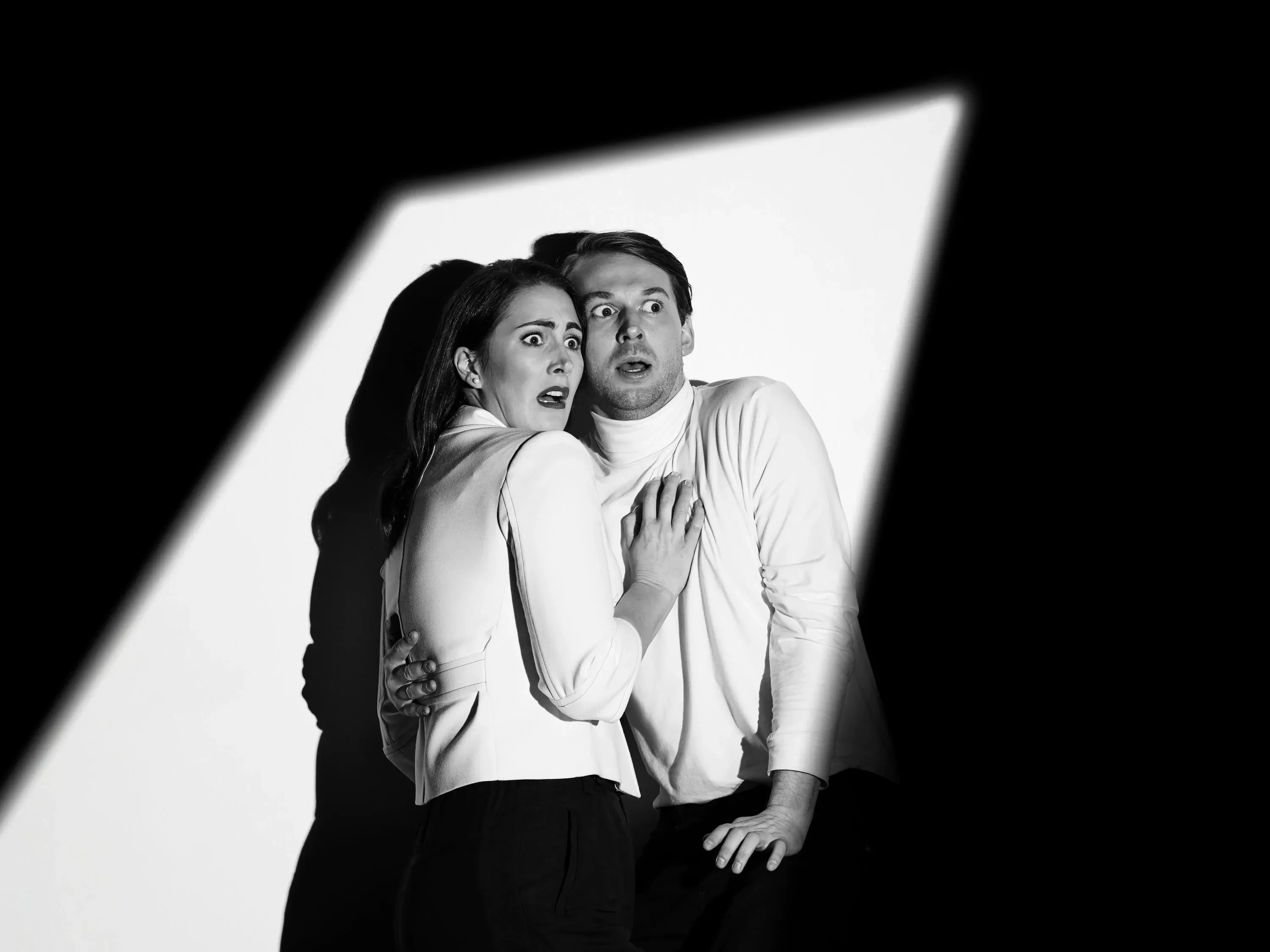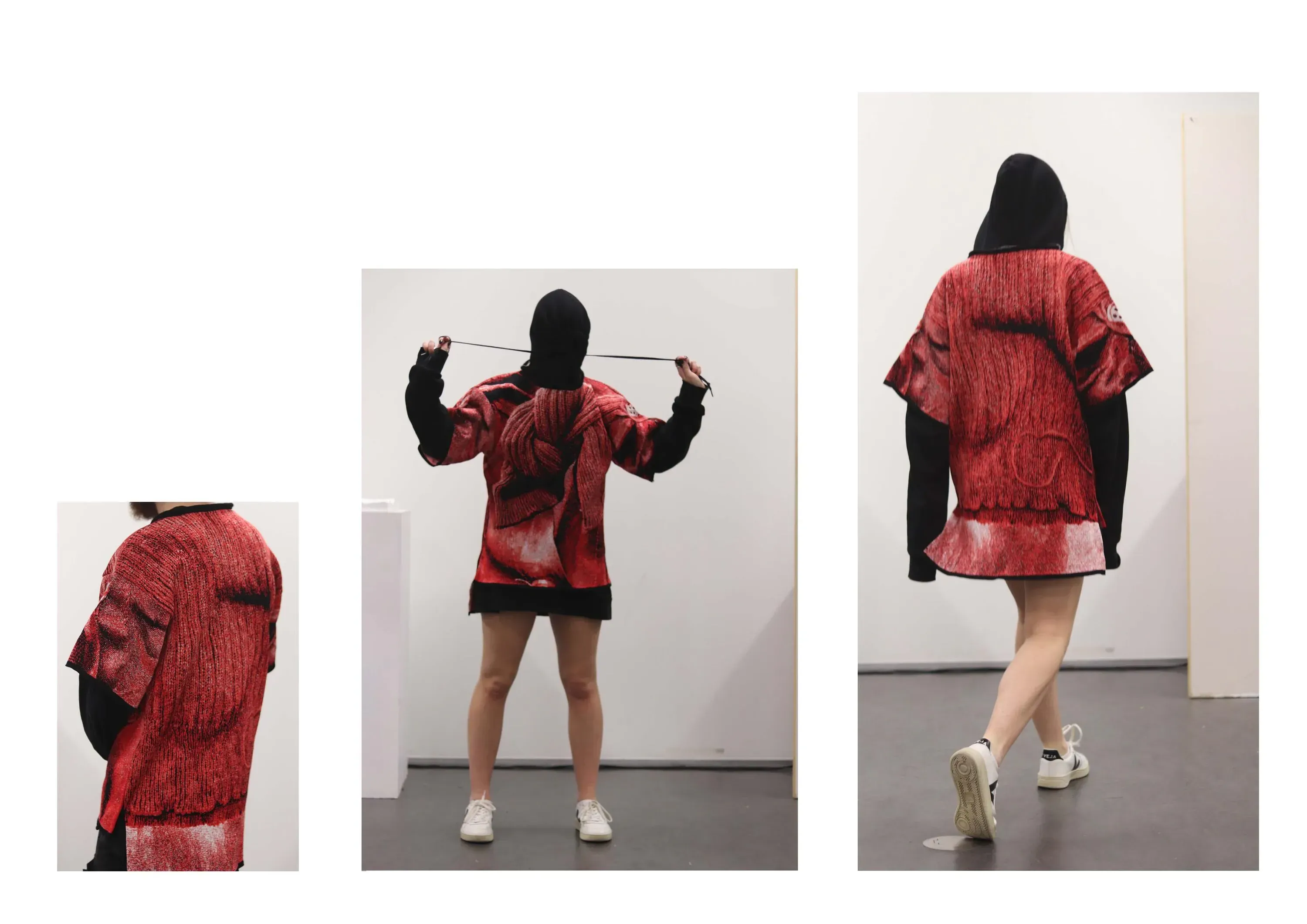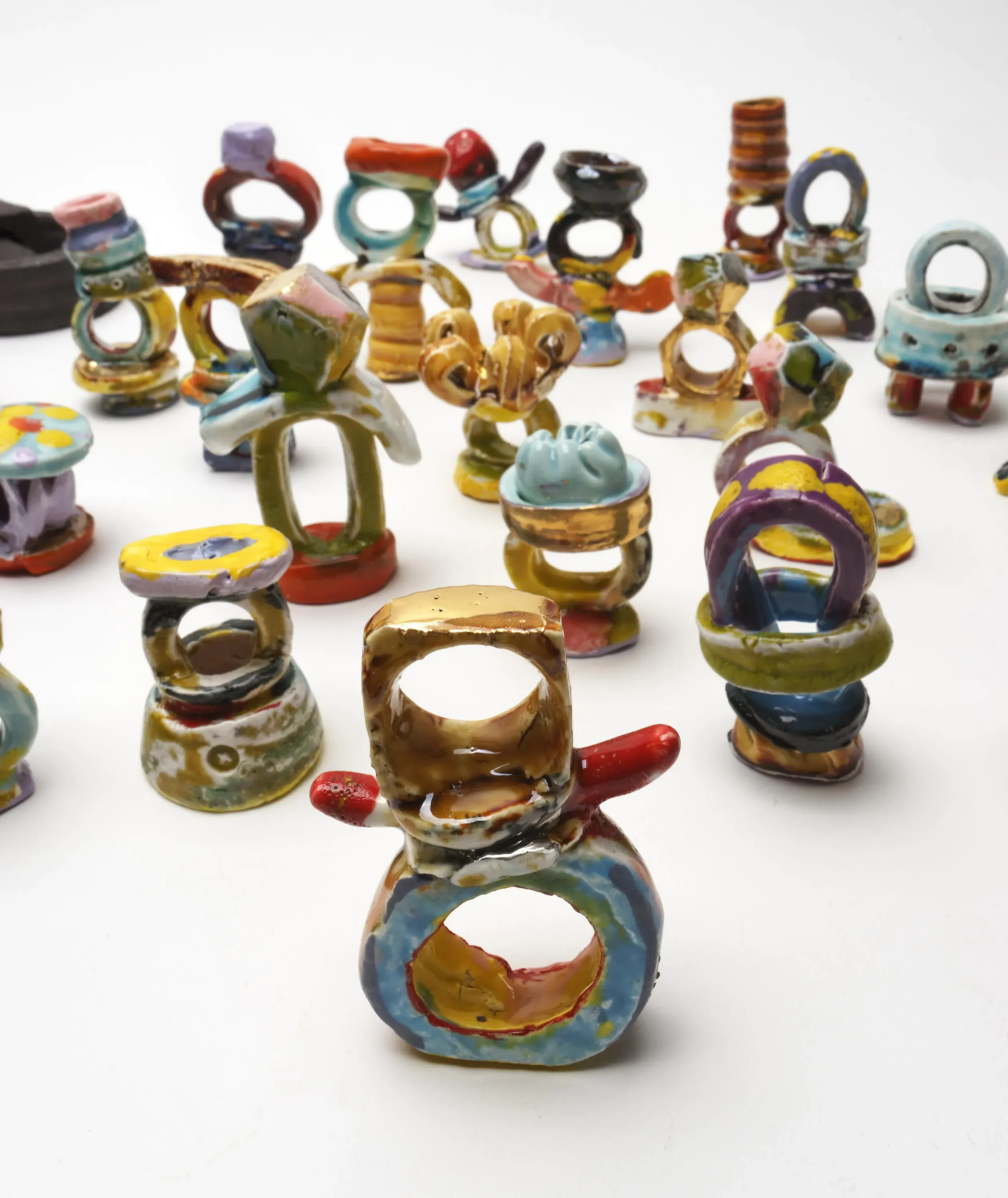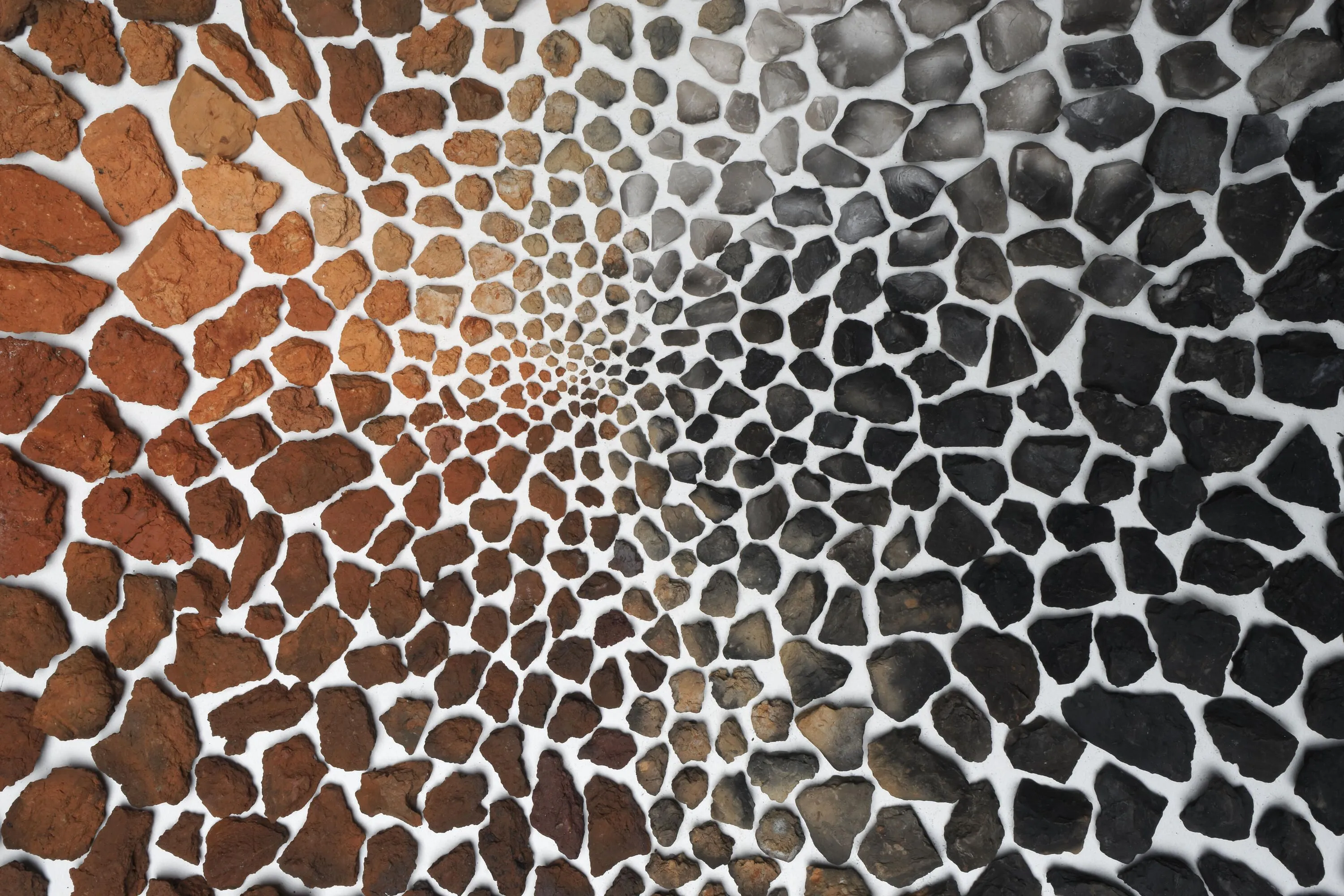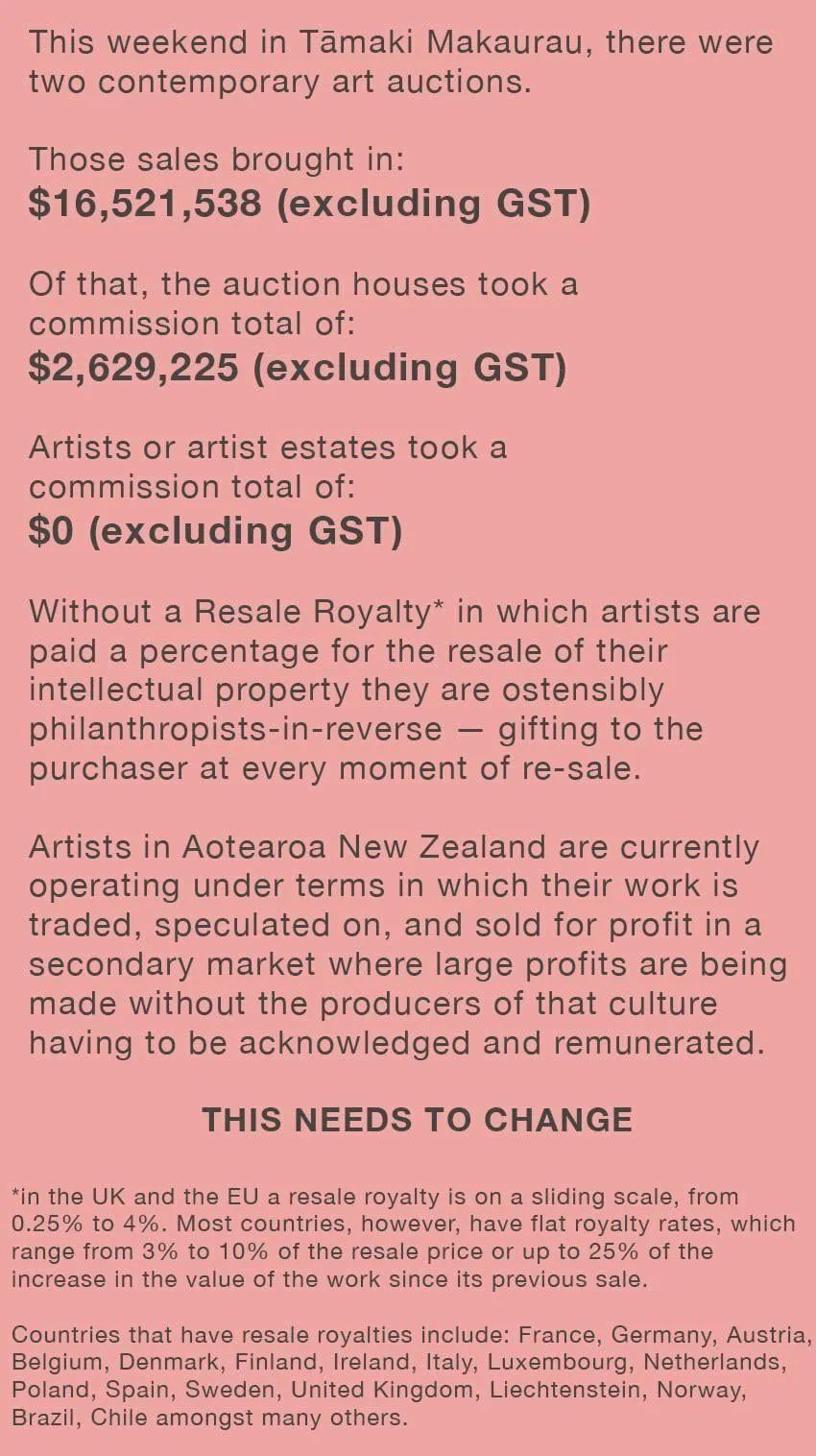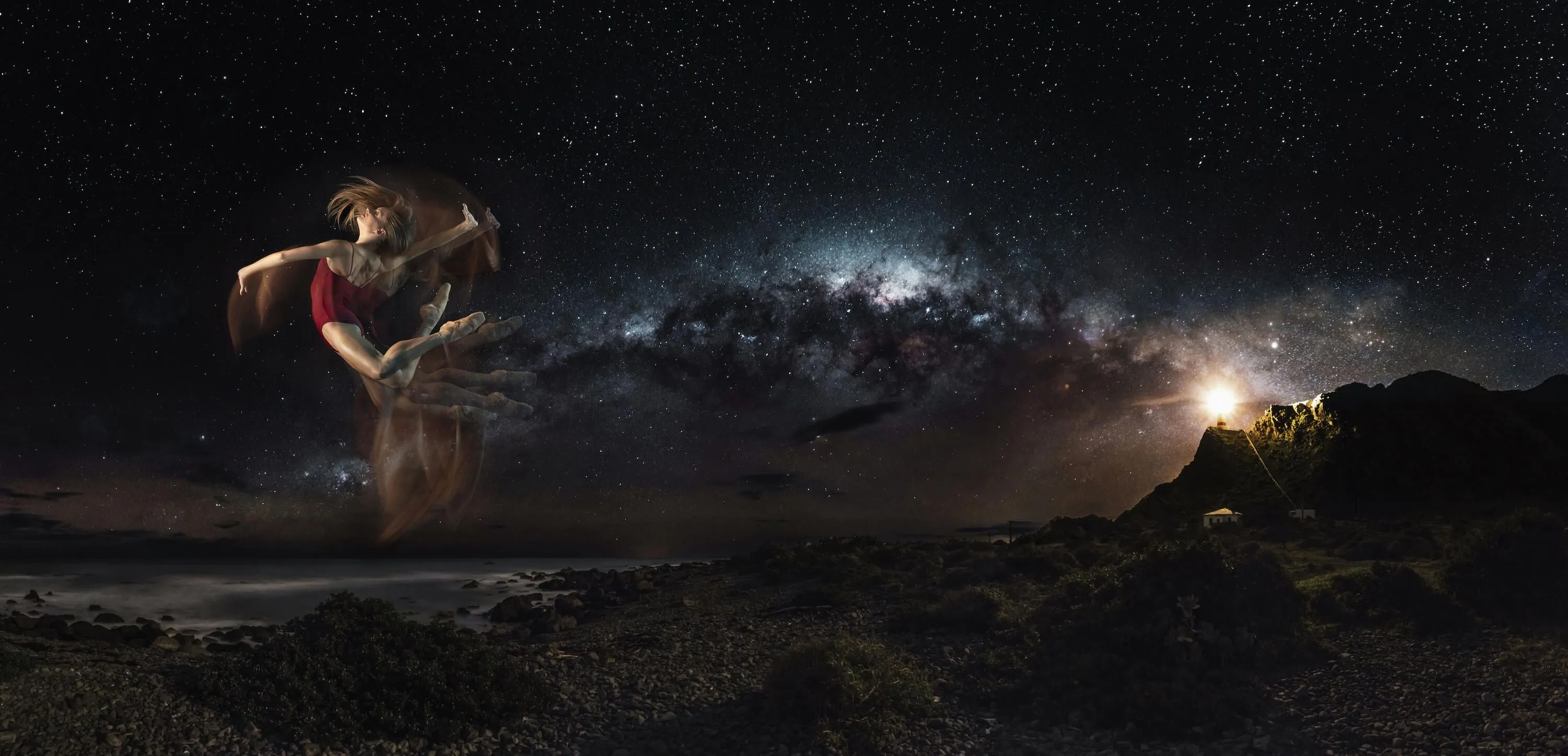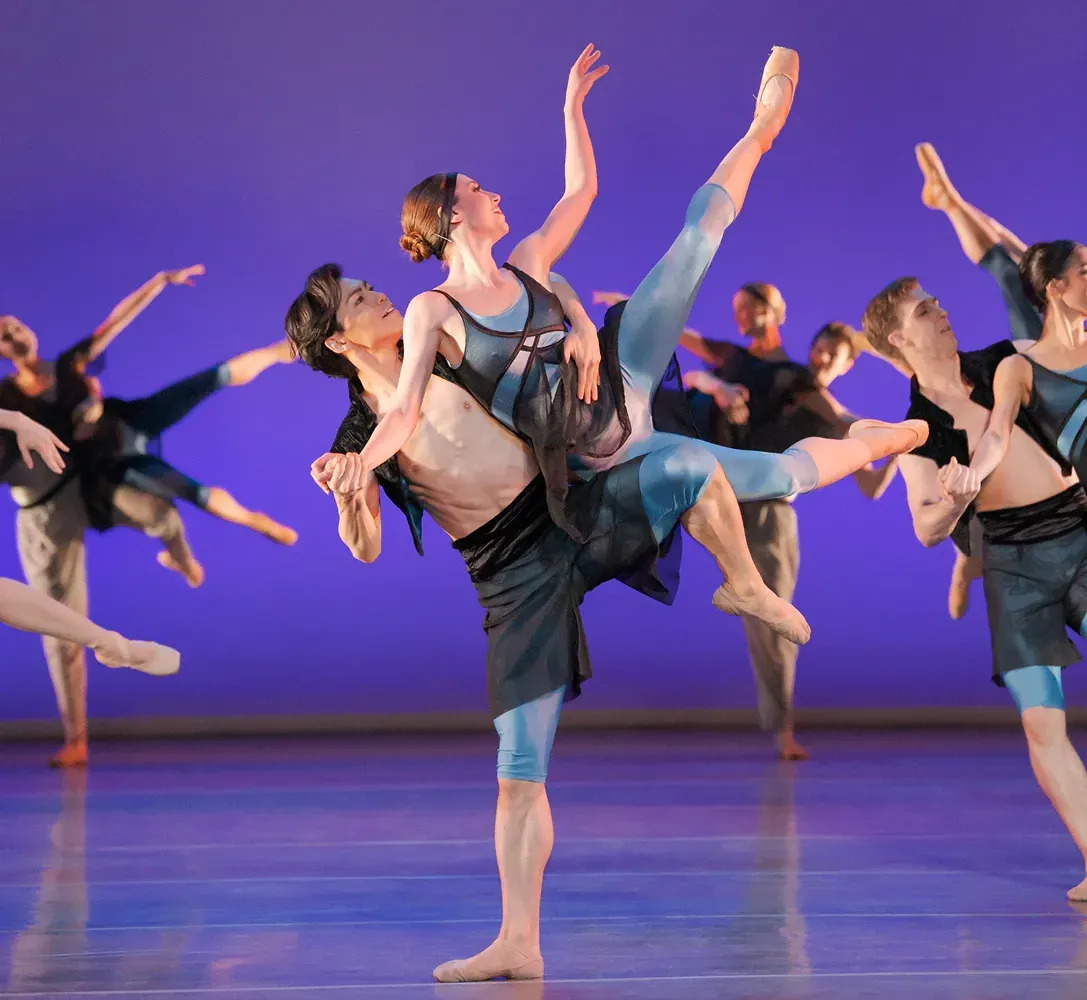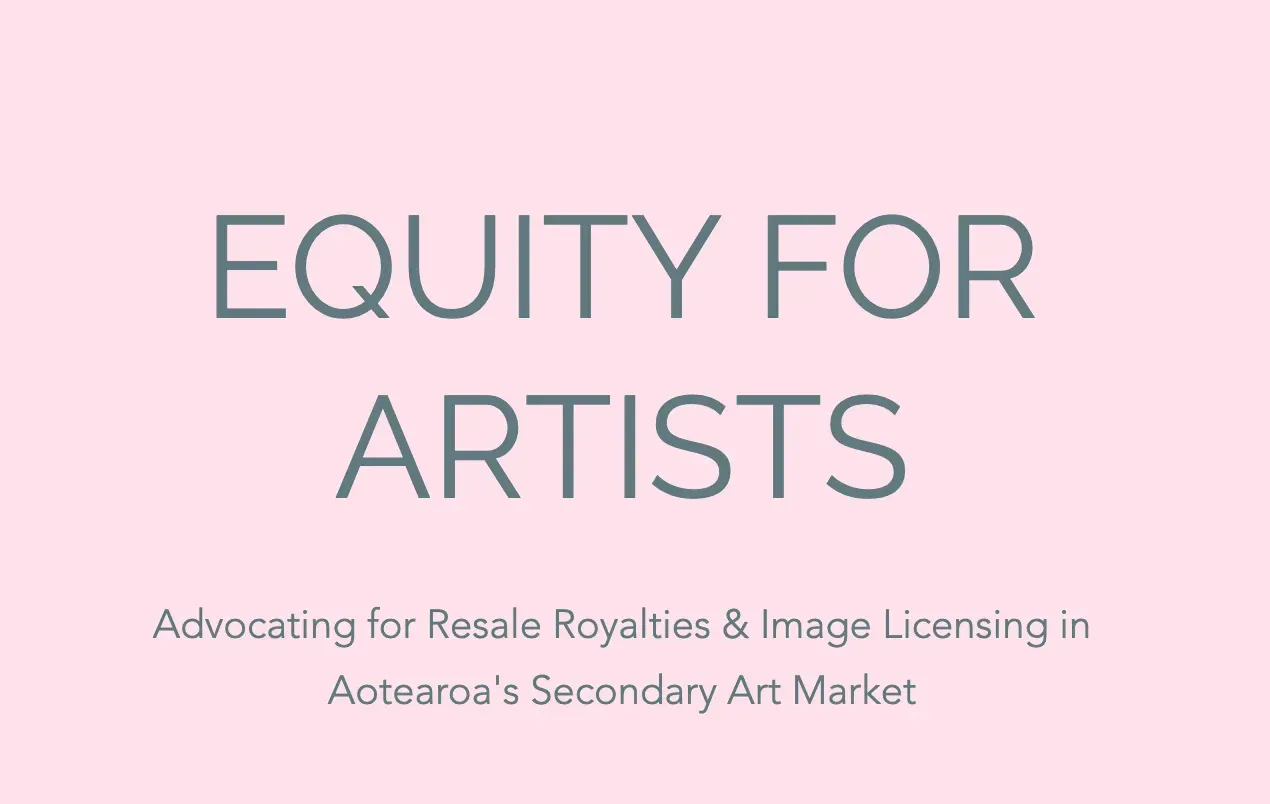Time for Change - Aotearoa Artists Rise Up for Resale Royalties
Written by
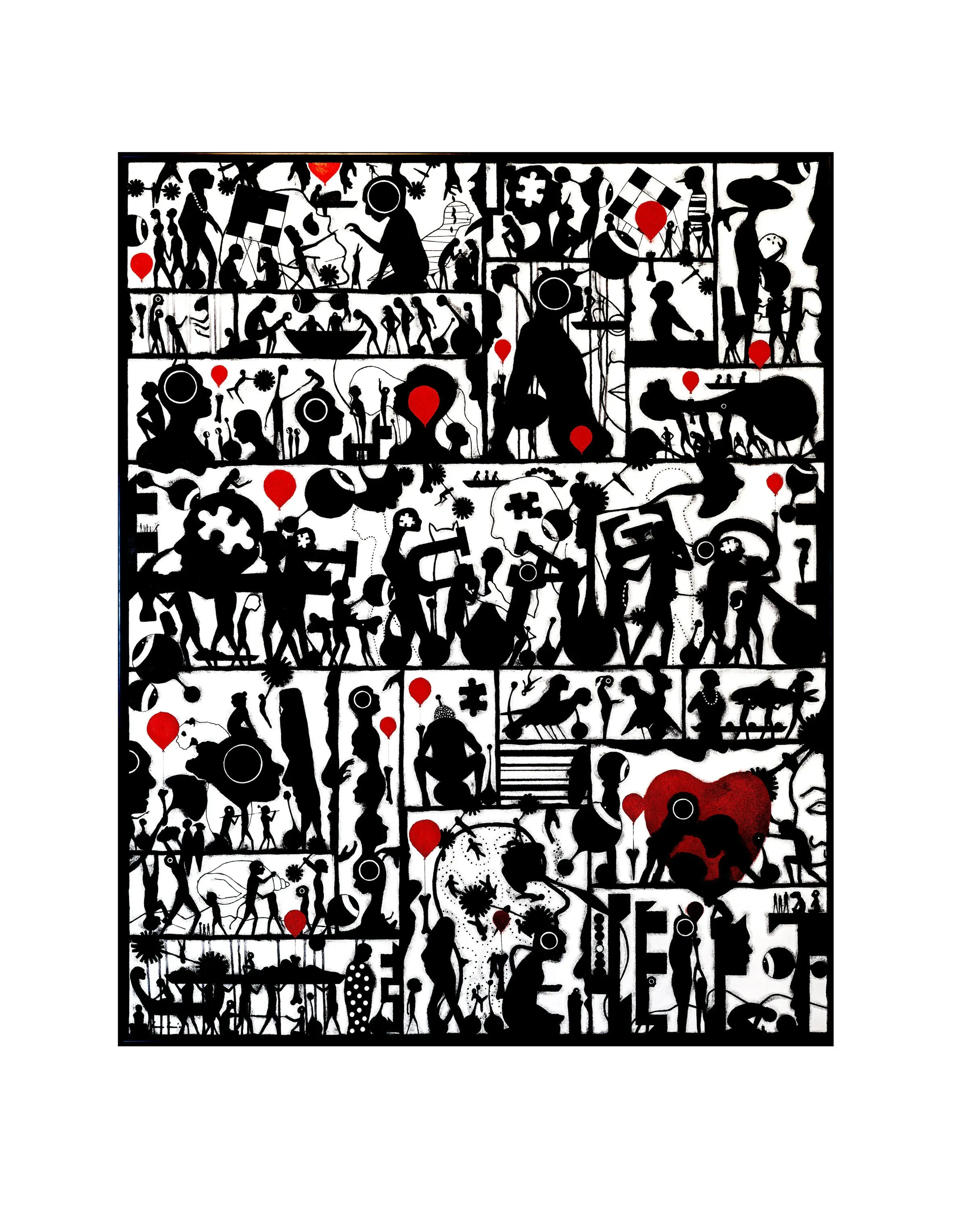
What are you worth?
We’re not asking a holistic, inner-value question here. This is straight financial worth - specifically regarding your creativity, your art, your work.
Unless you’re Sir Peter Jackson after his multi-billion dollar deal to sell Weta Digital’s assets - there’s a good chance that number isn’t as high as it deserves to be.
When you create a work of art - it becomes something that’s not just valuable and valued in the eyes of the beholder, but also in the pockets of the owner.
It’s no secret that art increases in value over the years, and the debate about whether the artist should be rewarded for that increase through resale royalties is nothing new. But the debate has certainly flared up again this week.
There’s a good chance you’ve seen the social media post - black text on a peach/pink background - that has spurred the creative community back into life, issuing a demand many agree with.
Aotearoa needs a resale royalty system.
The stats produced are eye-watering. From the two contemporary art auctions in held in Tāmaki Makaurau over the past weekend, $16,521,538 was spent - with $2.6 million of that lining the coffers of the auction houses through commission.
The commission for the artists or artist estates? $0.
Those stats don’t even include Tuesday’s landmark sale of a Charles F Goldie painting that hasn’t been seen in public for over a century, with Hori Pokai – A Sturdy Stubborn Chief (1919) sold for $1.42 million - not a bad mark up, considering its initial sale price was $56.
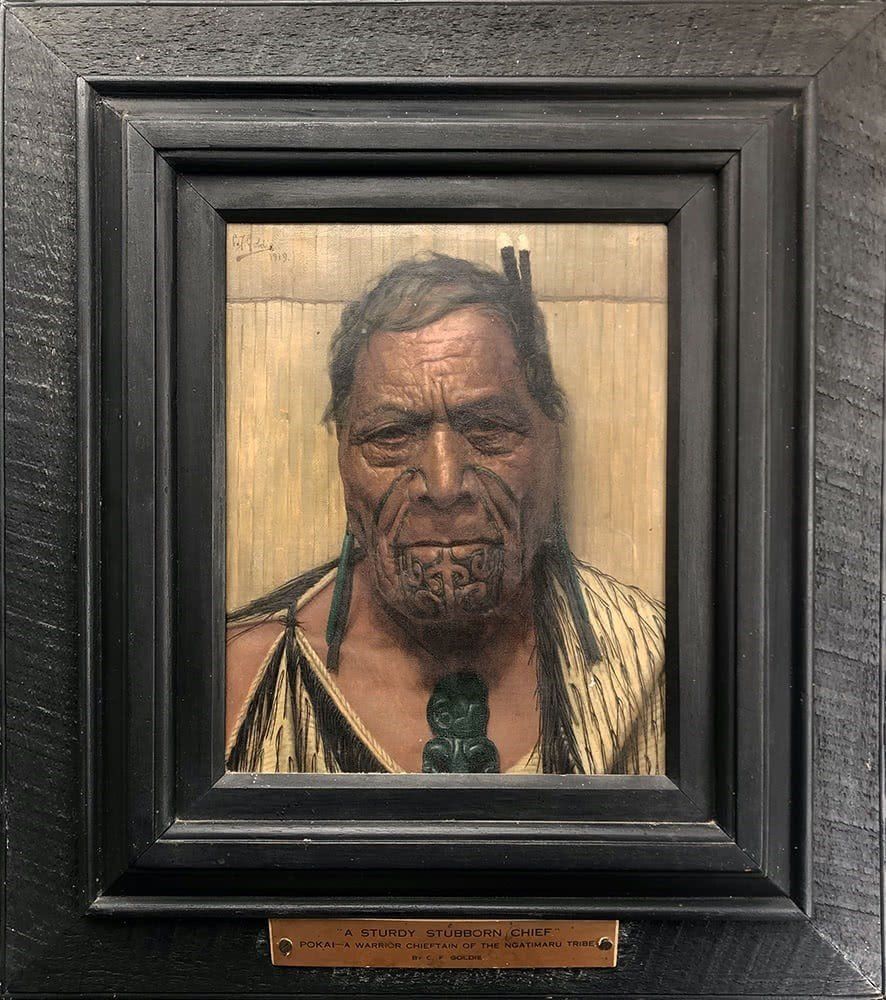
Charles F Goldie's Hori Pokai – A Sturdy Stubborn Chief (1919). Photo: International Art Centre.
The social post states “Without a Resale Royalty in which artists are paid a percentage for the resale of their intellectual property, they are ostensibly philanthropists-in-reverse - gifting to the purchaser at every moment of re-sale.
“Artists in Aotearoa New Zealand are currently operating under terms in which their work is traded, speculated on, and sold for profit in a secondary market where large profits are being made without the producers of that culture having to be acknowledged or remunerated.
“This needs to change.”
To the uninitiated, it sounds hard to put in place - but internationally, similar schemes are becoming commonplace and according to one source The Lowdown spoke to, the technology and systems required to manage resale royalty could be accessed and up and running by tomorrow.
Well-regarded artist and creative advocate Judy Darragh has rolled up her sleeves on this topic plenty of times before. In fact, one of her works was due to go to auction but never made it there - withdrawn by the vendor because of debate over copyright payment.
Darragh, along with fellow leading creatives Dane Mitchell and Reuben Paterson, are taking action, forming Equity for Artists Aotearoa - with a newly launched website with a mission statement of “advocating for resale royalties & image licensing in Aotearoa's secondary art market.”
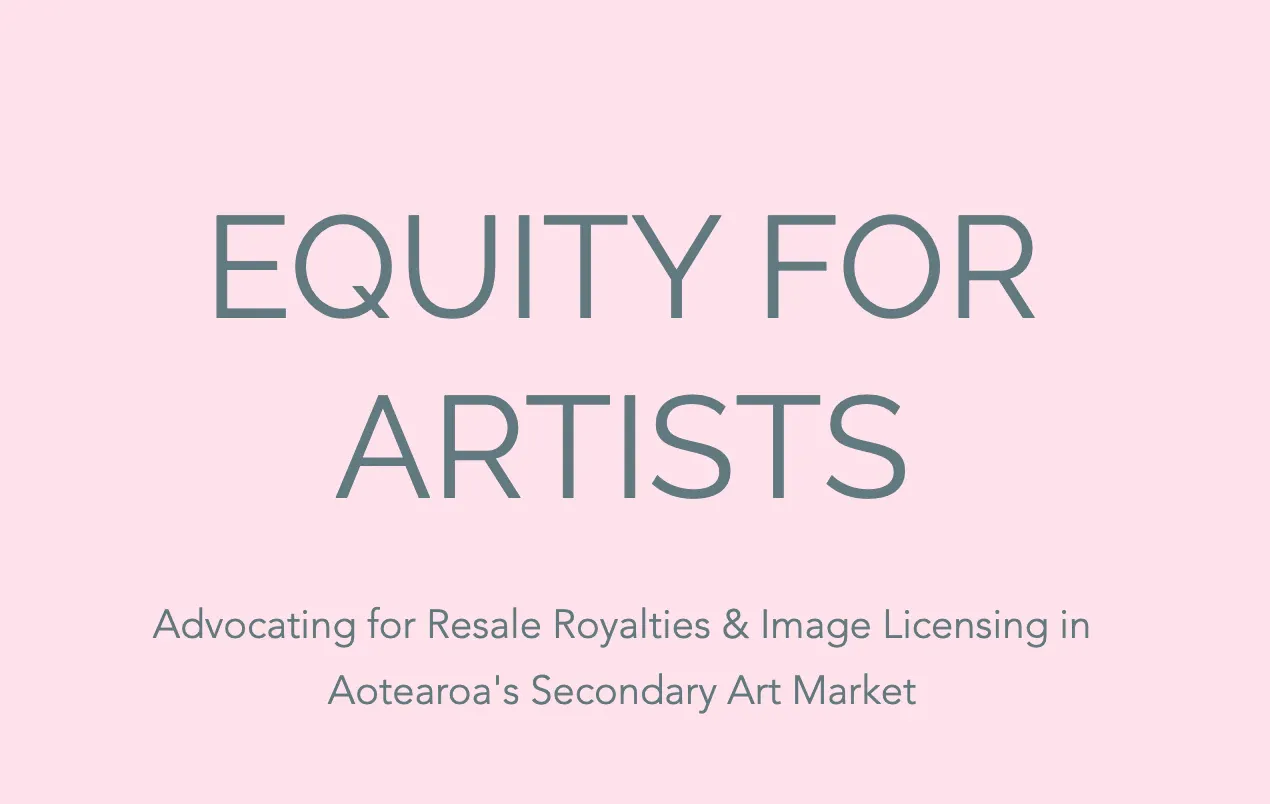
New website on the block.
As well as providing resources for artists, Mitchell states in an email “Our next step is twofold: educate and talk. We aim to organise a hui/meeting with various sectors involved — ideally for us, it would be with the goal to reach an agreement in principle from auction houses that change is needed, and to get this issue back in front of the Manatū Taonga Ministry for Culture and Heritage.”
When contacted by The Lowdown, Darragh spoke strongly about making this a positive conversation that’s inclusive for all involved.
“Artists need to control their intellectual property as we make the work, we don’t get paid to make, we have precarious incomes. The art world is an organism with resources which we need to share more than ever post COVID. I would love to see artists, dealers, collectors and the secondary market working together to keep this organism humming along.
“Things like finding affordable studios, inconsistent artist payments, student debt and juggling of part-time work to support artmaking has burnt out makers. There is a lot of discussion around sustainable careers and an artist wage - royalties and copyright would signal that artists are valued.”
Artist Jessica Pearless, whose career includes working as a dealer, with auction houses and in not-for-profit with her current role at Northart, is well placed to speak on the topic. Along with partner Jonathan Organ, they set up Paragon Matter in 2018 to assist artists and arts organisations in developing viable systems and careers.
In an Instagram post, Pearless writes “Resale royalty is a hugely important step to recognise the development of sustainable careers for artists and creatives in Aotearoa New Zealand, putting us on par with other countries and validating a career in the arts as a viable one.
“It is time to advocate for artists and those that offer them a platform to shine - to support and recognise the contribution creatives make to contemporary culture on a primary level.”
Raymond Sagapolutele, one of Aotearoa’s most respected arts photographers, has also lent his considerable mana to this issue, admitting it “stirs up a fair amount of passion from artists and our supporters”.
He told The Lowdown “with the ongoing impact of COVID on the arts industry across all disciplines, what you're worth as an artist comes into sharper focus when trying to survive the financial impact of losing work, exhibitions and access to markets.
“The idea of earning a percentage off of the resale from your work is not something I considered until I watched The Price of Everything, a documentary by Nathan Kahn. “There is a particular segment where artist Njideka Akunyili Crosby watches her work on-sell at auction for nearly a million dollars, of which she sees nothing. All of this framed in her small studio as she struggles to make and look after her small family.
“This was a light bulb moment for me and it became something of a discussion point among my Pasifika arts peers - mainly because I liked to bring it up.
“The reality is that at an art school level, there is generally no guidance to the financial reality of being a full time practicing artist, a sole trader of sorts, one that needs to be aware of the rights of the artist to understand their value and the value of their intellectual property.
“The reality is that for many of us, the idea of resale is something other people do as we try to make the initial sale for whatever price we can get.”
That’s something Chief Executive of Copyright Licensing New Zealand (CLNZ) Paula Browning is trying to address - using a grant from Manatū Taonga’s Capability Fund to run a Creative Rights Education programme for authors, publishers and visual artists in the New Year.
“Artists need to understand their rights. This doesn’t get taught in school or art school and, unfortunately, many only find out about copyright and moral rights when they experience infringement.”
The licensing aspect should also be a part of this debate, according to Browning.
“Caroline Stone, from Creative Legal Services, has been working with CLNZ to develop a licensing scheme for Auction Houses in Aotearoa.
“The Auction Houses make copies of the artist’s work for promotional purposes and this is a breach of the artist's rights. The artist’s permission is needed for this type of reproduction, and a fee should be paid unless the artist has declined it.”
Browning says the creative community deserves action and a response from our officials.
“The government looked at this in 2007 and again in 2018. We are one of a very few countries that doesn’t acknowledge that artists should share in the increasing value of their work.
“If we look to Australia and the scheme that operates there, indigenous artists are clearly benefitting and there’s no reason why that can’t happen here. The majority of the government policy work has been done.”
Sagapolutele agrees. “The secondary art market is something that for the most part we have no control over but this is an issue that has been addressed by other countries and implemented by the likes of the UK, Australia, Germany, France and a few others. We tried in 2007 and by 2009 it fell over.
“Maybe we should try again.”
So the voices are once again growing - but are they being heard in the corridors of power?
The Lowdown took the issue direct to Manatū Taonga.
Emily Fabling, Deputy Chief Executive, Policy and Sector Performance (Acting) told The Big Idea “Manatū Taonga remains committed to assessing the merits of an Artist Resale Royalty scheme.
“We will work with the sector to understand the potential impacts of such a scheme on artists, art dealers, our Treaty partners and the New Zealand public. No decision will be made without public engagement.
“Ensuring the creative and cultural sector can survive, adapt and thrive in response to COVID-19, especially in light of the latest Delta outbreak, continues to be a key priority for Manatū Taonga and as a result, work to consider an Artist Resale Royalty Scheme has been slowed.
“Fair remuneration for artists and practitioners is important to Manatū Taonga and was an important consideration in evaluating applications to the Cultural Recovery Funds, including the Capability, Creative Arts Recovery and Employment Fund and Innovation Fund.
“Manatū Taonga intends to resume work on an Artist Resale Royalty Scheme in 2022.”
So it sits on the horizon - which will comfort some, but not others. Action and leadership is needed on this topic - we have heard countless platitudes of the importance of the arts and no one needs a refresher on the lack of income issue that confronts our makers on a daily basis.
Providing an opportunity to share in the wealth they are creating seems more than fair - and it’s not like there isn’t precedent.
As Sagapolutele explains, “I have a brother who is part of the music industry and his musical artworks are managed by APRA - which means that anytime his work is used, he is looked after by the framework they have in place to gather revenue. I really like that.”
Specific to the Pacific
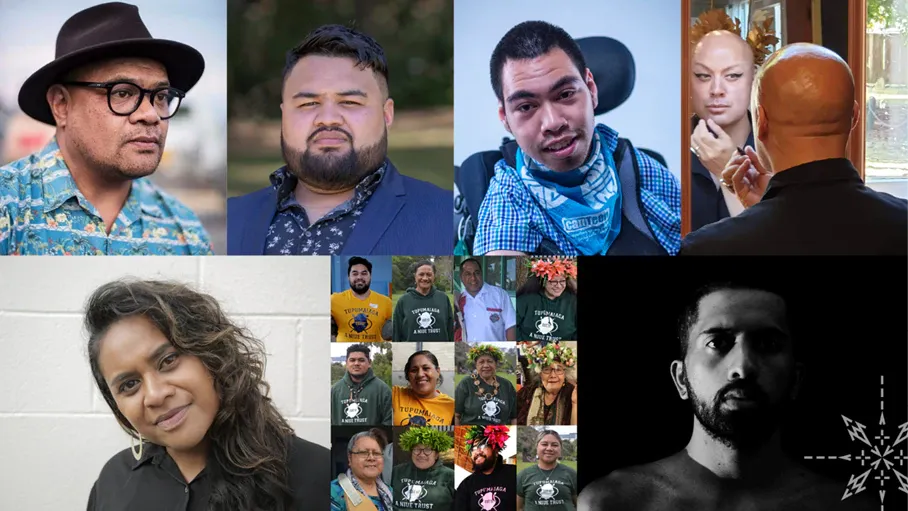
2021 Arts Pasifika Awards recipients. Photos: Supplied.
There has been some recognition and reward handed out to some of the leading lights of the arts sector in New Zealand over the past week - particularly with our Pasifika artists.
Creative New Zealand’s annual Arts Pasifika Awards were announced on Monday, with seven participants honoured.
Visual artist Andy Leleisi’uao has claimed the $25,000 Senior Pacific Artist Award for his career to date, which includes over 90 solo shows exhibited around the world - with his next one, An Uncanny Catharsis of Unrequited Bones opening at Auckland’s Artis Gallery on 30 November.
Leleisi’uao told The Lowdown “this is a huge and humbling accolade especially given the esteemed company I find myself in. My parents Pepe and Savea Fa’asisina Leleisiuao, my sister Aova'a, family and close friends have always willed me on and this Award is such a lovely way to let them know their belief in me has been worthwhile.
“I want to acknowledge Johnny Peninsula, Pusi Urale, Maualaivao Albert Wendt and Papalii Si'a Fatu Feu’u for their courage, guidance and inspiration and to the galleries who have supported me over the years and supporters of Pacific Art.
“This Award will have even more meaning if we had a space where our people can be in front of our works. We need a Modern Pacific Art Museum.
“A space that unites us as Pacific artists where we can explore, share and transcend our stories of identity, belonging, self-respect, alofa, nostalgia, responsibility, dreams, imagination, solidarity …. all these elements and more.
“I'm interested in projects that push and support Modern and Post Modern Pacific Art and artists forward.”
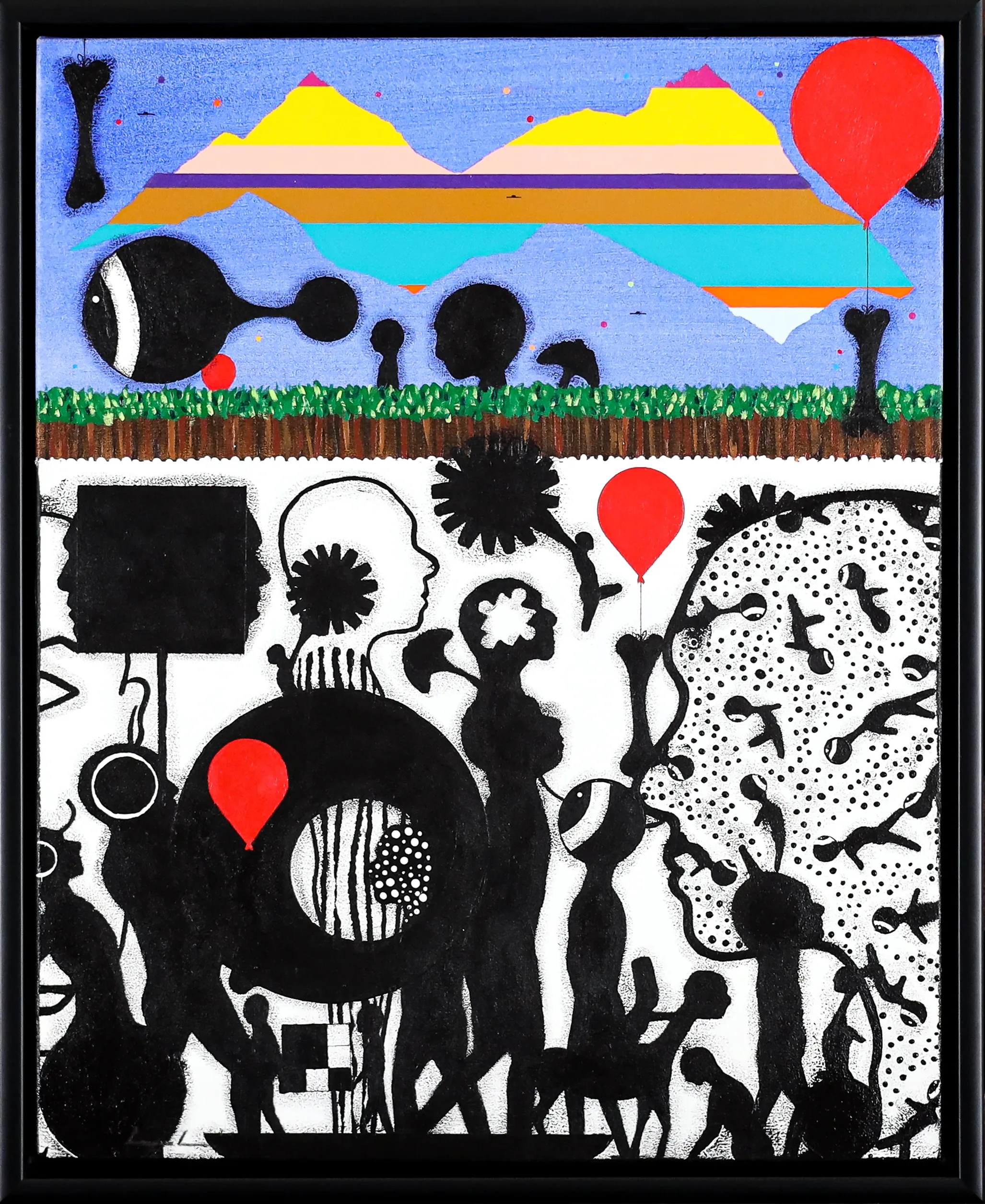
Andy Leleisi'uao's Interweaved Erewhon, An Uncanny Catharsis of Unrequited Bones Part I. Photo: Raymond Sagapolutele.
Others recognised in the 2021 awards include Auckland’s Tupumaiaga A Niue Trust winning the Pacific Heritage Art Award, Tupe Lualua claiming the Contemporary Pacific Artist Award, Lindah Lepou honoured with the Special Recognition Award, Ronnie Tua named the Pacific Toa Art Award recipient, Vivian Aue the Emerging Pacific Artist Award and Ridge Ponini the Iosefa Enari Memorial Award.
The considerable talent within the Moana creative community continues to be regularly celebrated by Tautai Gallery as well.
They’ve been releasing the outstanding and thought-provoking work of their 10 Fale-ship recipients over the past few weeks - which recently included music industry veteran Teremoana Rapley’s progression towards an album 34 years in the making.
Rapley spoke with Tulia Thompson from The Big Idea about her hall of fame career - and how she’s focussed on redefining herself since walking away from the music industry after being exploited as a teenager.
“It focuses on the business side and it gives very little love or support to the human being that is creating all this magic - the so-called magic - right?
“What I do is I express myself through music. I'm not a pop star. I'm not an R&B star. I'm not a rap star”.
The latest Fale-ship artist to have their residency work released is Elsie Andrewes, is a digital illustrator based in Whangārei. She talks through her creative process below.
Lit on fire
We called it a few weeks ago - October/November has been a boon period for those who like their creativity in the form of literary festivals and discussions.
With Dunedin’s NZ Young Writers Festival, Verb Wellington and WORD Christchurch all falling in consecutive weeks - there’s been a regular dose of engaging debate and workshops both on location and on the internet.
Another impressive online offering played out this week - with some much-deserved attention focussed on the long term success of several Aotearoa writers.
The live online panel for the 2021 Prime Minister’s Awards for Literary Achievement brought out some really interesting kōrero from Anne Kennedy (poetry), David Hill (fiction), Dame Claudia Orange (non-fiction) and Dr Monty Soutar (Michael King Writers Fellowship).
Some of the heavy hitters in the industry were among those posing some important questions to this year’s recipients - following some live reading and general discussions. You can watch below.
And if being part of a discussion about where the arts currently stands in New Zealand piques your interest, The Arts Foundation is putting on a free online conversation this evening called State of the Arts.
Miriama Kamo will be the moderator with Arts Laureates Simon O'Neill, Dr Fiona Pardington, Shayne Carter and Oscar Kightley joined by former Springboard recipient Moana Ete - with the event signalled as “delving deep into how the arts are tracking in Aotearoa, featuring frank takes from the people who live it.”
Arts Festival's big announcement
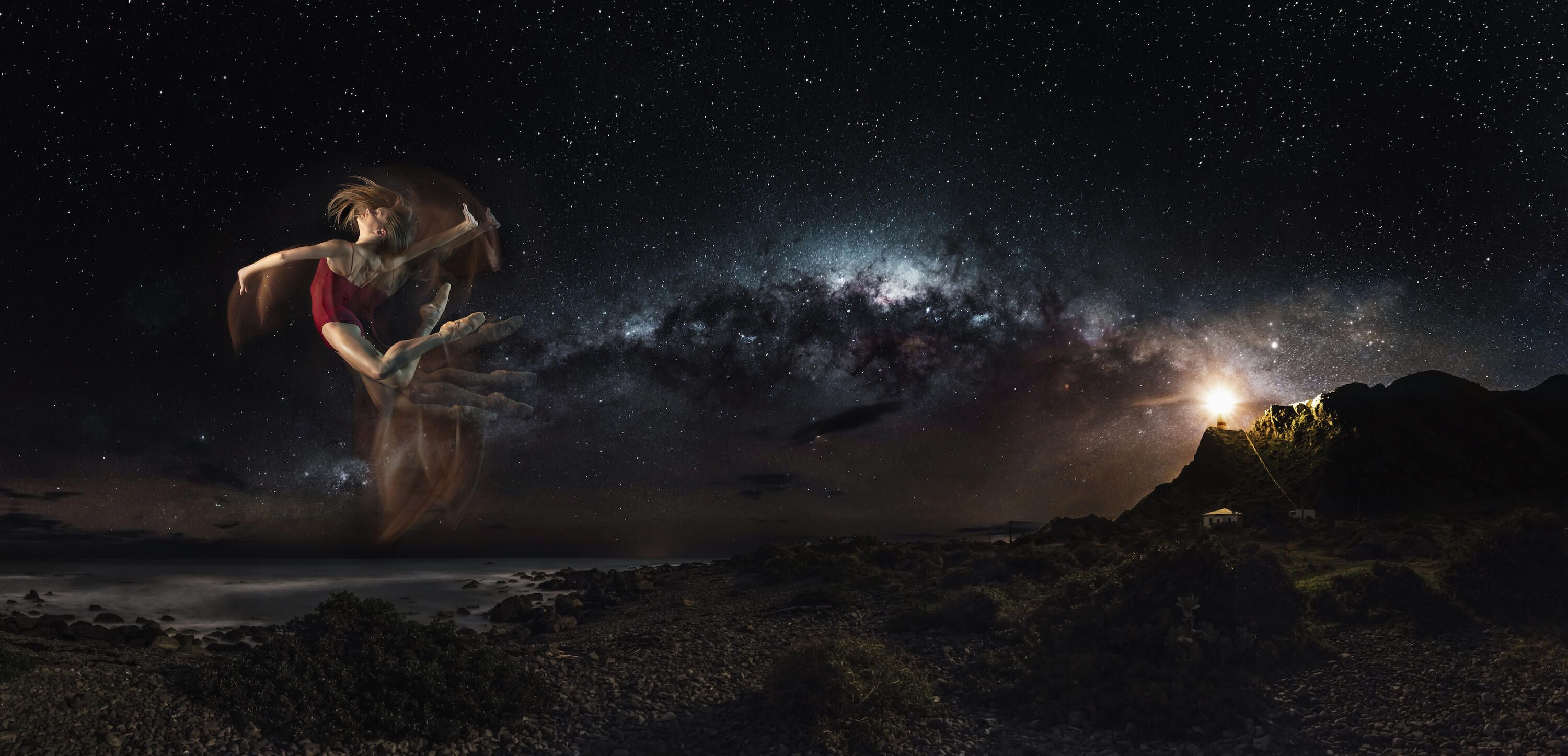
RNZB soloist Kirby Selchow. Photo: Ross Brown.
One of the mostly frequently used (and certainly the most unwelcome) nouns of the last 18 months has been turned into a verb - and used to be a means of support, rather than panic.
As 2021 starts to hurtle - or stumble, depending on where you sit - to a conclusion, there’s reason to get excited about 2022 today.
Auckland Arts Festival will reveal its full programme for next year’s highlight on the Tāmaki Makaurau cultural calendar with an online release at 2pm - click here for full details that includes 80 individual events, eight new commissions, 14 world premieres, seven New Zealand premieres and over 700 artists.
The Lowdown can reveal part of that programme is targeted support for just some of the shows that have been - as the AAF team are calling it - COVID-ed, or bowled by the COVID ball.
Artistic Director Shona McCullagh explains to The Lowdown “the festival takes its role really seriously as a platform to support so many artists and companies whose work has been affected by COVID over the last 18 months.
“Personally, every time I’ve seen a show go down - particularly those that are in rehearsal or dress rehearsal - it’s been viscerally painful to watch and I really empathise with the artists, the producers and the venues.
“That impact is three-fold really; it’s financial, it’s hugely logistical - all the reproducing, unproducing that happens - and it’s also the mental and emotional strain.
“We are just delighted to be supporting several companies that have had their work COVID-ed and we are just so thrilled to present an opportunity for them to not have to worry about the logistics, providing venue support, marketing, technical support and fees.”
That includes Alatini, a uniquely Pacific take on the Aladdin musical which was COVID-ed twice before Troy Tu’ua built up the courage to ask AAF for a place in their lineup. He told The Big Idea “our hopes and dreams were shattered when Aotearoa went into level 4 lockdown, forcing us to cancel our entire season of Alatini. Thankfully Auckland Arts Festival took a leap of faith in Sau E Siva Creatives to support and give us the opportunity to finish what we started back in February 2020!”
Another reprieve is for Ruby Solly’s taonga puoro and orchestra work that was co-commissioned with Auckland Philharmonia Orchestra for the 2021 Festival. It never got the chance to premiere, and after two more failed attempts to remount it, the work looked to be stalled until AAF stepped in.
It’s also a lifeline for Silo Theatre’s Live Live Cinema - one Executive Director Chloe Weavers is thrilled to receive.

Silo Theatre's Live Live Cinema. Photo: Supplied.
"We were right in the middle of rehearsals when Tāmaki Makaurau went into Level 4 lockdown and the COVID curtain came down. Needless to say, it was pretty disheartening.
“However, working in partnership with the Festival to present Live Live Cinema: Night of the Living Dead in 2022 is a great result. Our creatives and actors get to return to the stage and we get to share this exciting world premiere with our audiences.”
Royal New Zealand Ballet Executive Director Lester McGrath is feeling equally relieved to have Venus Rising rise like a phoenix to at last feature in Aotearoa’s biggest city.
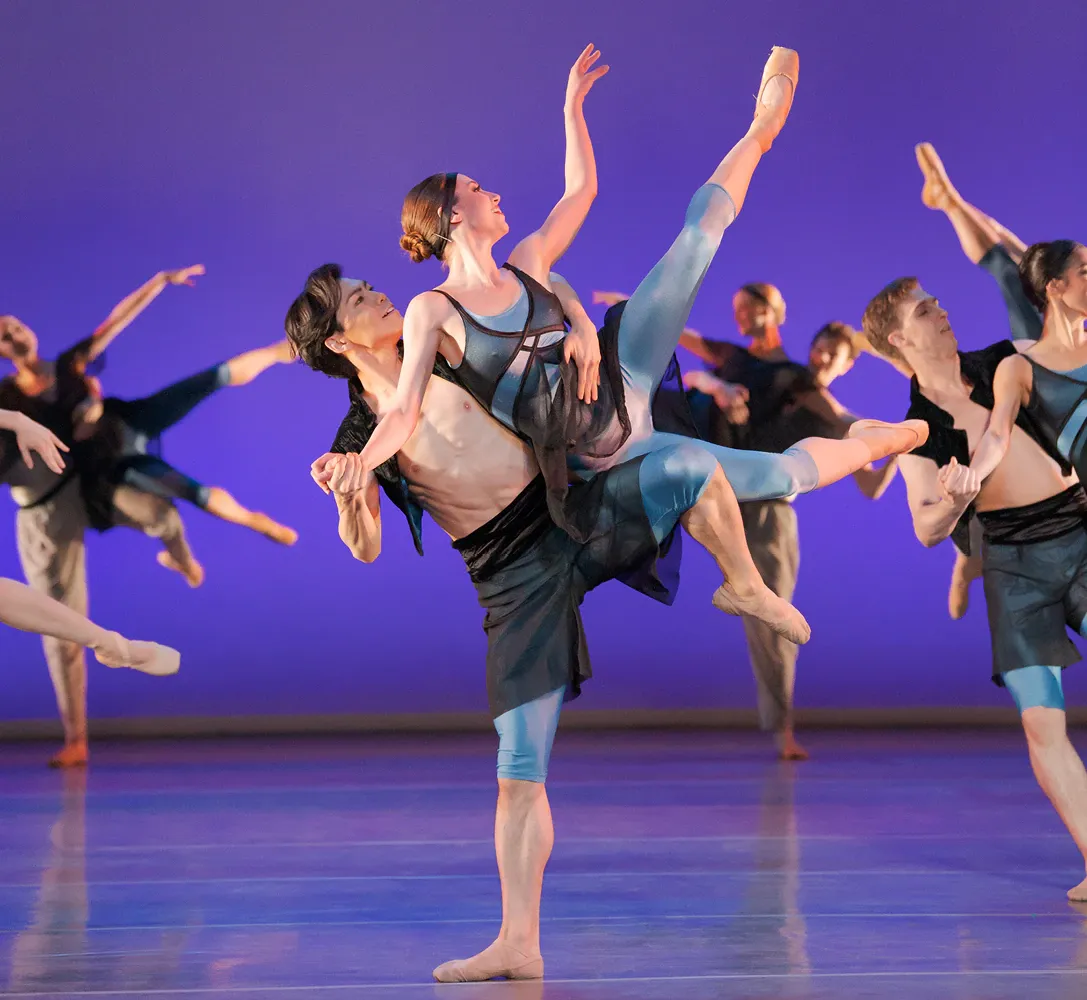
RNZB's Venus Rising in performance. Photo: Supplied.
He tells The Lowdown “it was a tough blow for everyone when we had to postpone and then ultimately cancel our Venus Rising season in 2020. But it has been even tougher for Auckland audiences who have had a lot of shows cancel in the last three months.
“Venus Rising is a most stunning trio of works by three formidable women. To partner with the AAF in getting this work back on the stage in Auckland is a welcome boost - we can’t wait to finally perform this glorious programme for festival audiences.”
Crafty customers
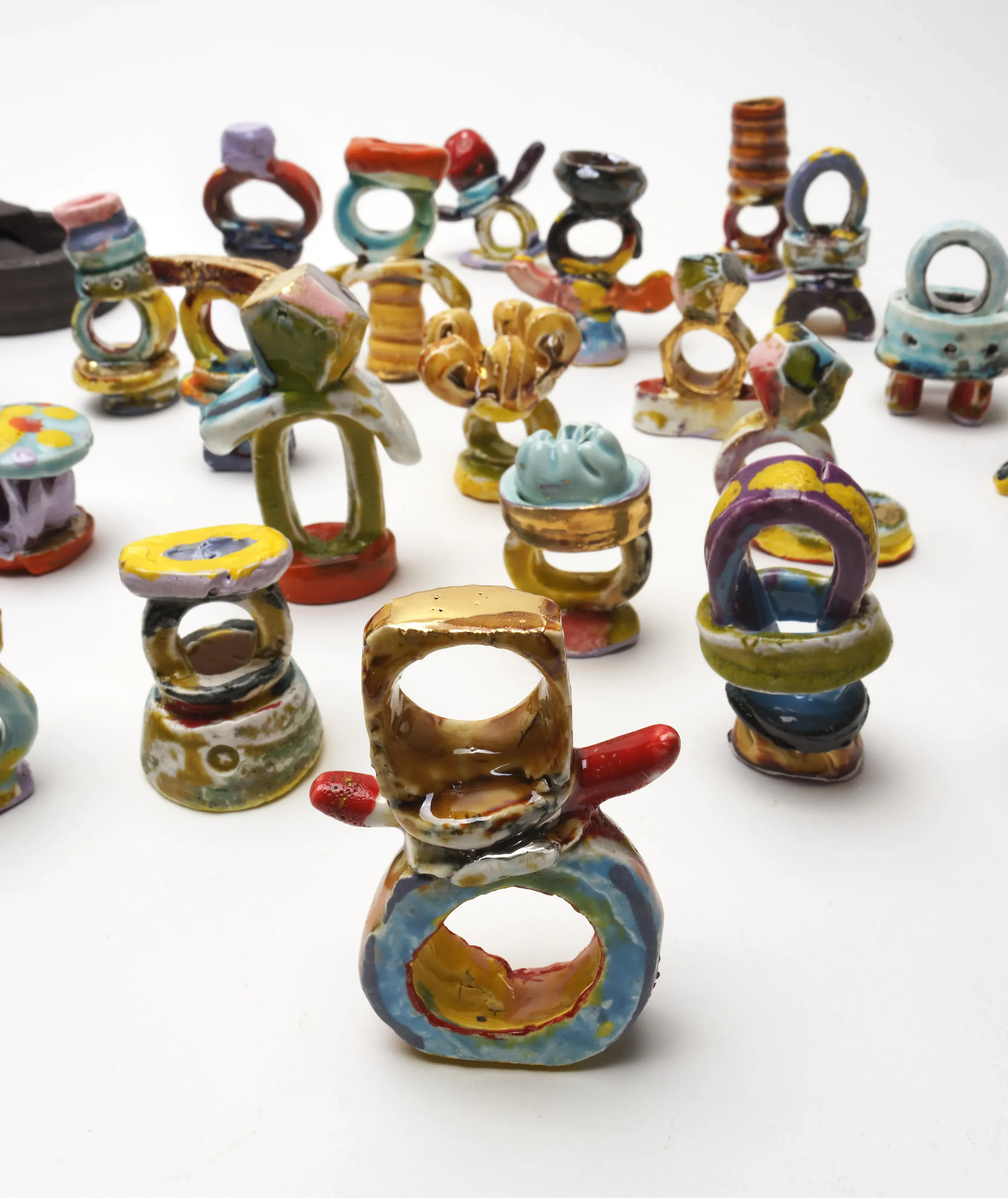
Madeleine Child, Circus of rings, ceramic. Photo: Haruhiko Sameshima.
For those interested in the world of craft - the shortlist is out to decide New Zealand’s Top Potter - and no, not in reality TV format.
33 works by 30 different artists have been made finalists for the highly sought-after 2021 Portage Ceramic Awards - which for only the second time in the competition’s prestigious 21-year history will be judged by a New Zealander, two-time Premier Winner Raewyn Atkinson.
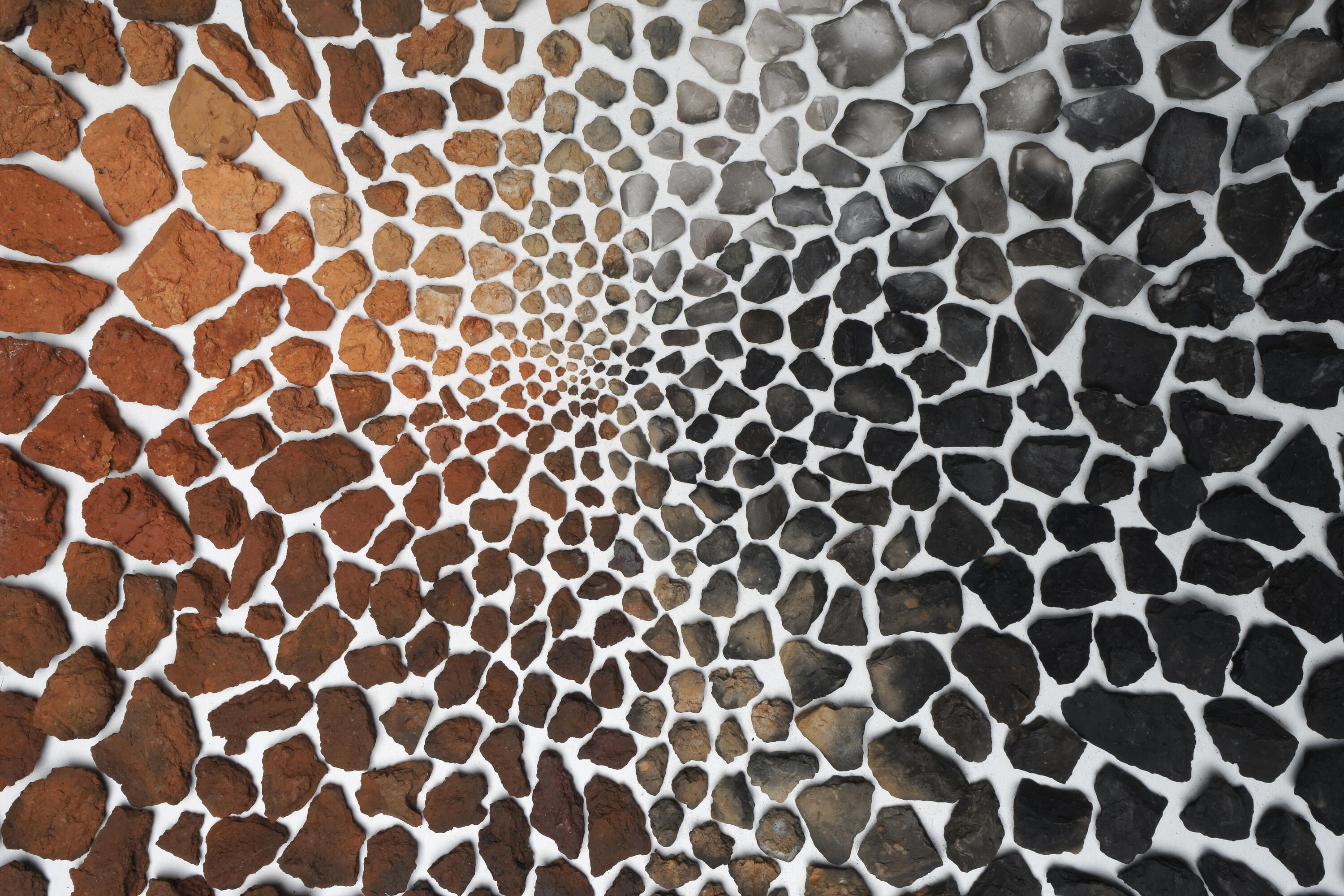
Mel Ford's Common ground, fired and carbonised clay from various sources both locally dug and dried out bags of imported clay from a communal ceramic studio. Photo: Haruhiko Sameshima.
The winner will be announced on 3 December, with all the finalists’ work on display at Titirangi’s Te Uru Waitākere Contemporary Gallery for three months from the following day.
Less of a wait to see the winners of ECC Student Craft Design Awards - with the Dowse presenting the winners from this Saturday.
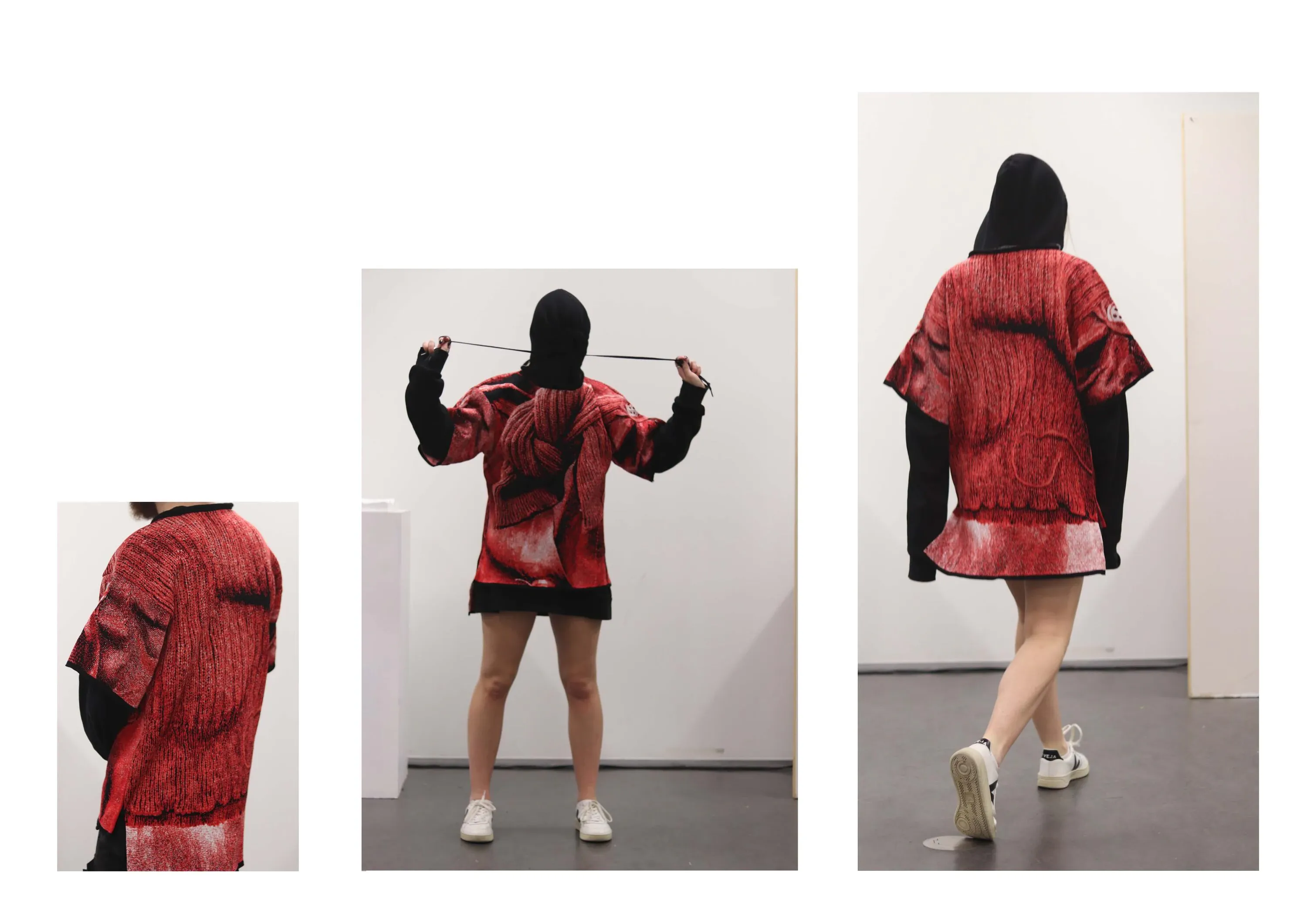
Garments from Supreme Award winner Daniel Collings' Bound by Binary collection. Photo: Supplied.
The supreme award went to AUT Master of Creativity student Daniel Collings’ Bound by Binary knitwear collection.
Promisingly, it was the largest group of finalists in the competition’s 35 year history - open to all tertiary students to enter multi-discipline work across both craft and design.
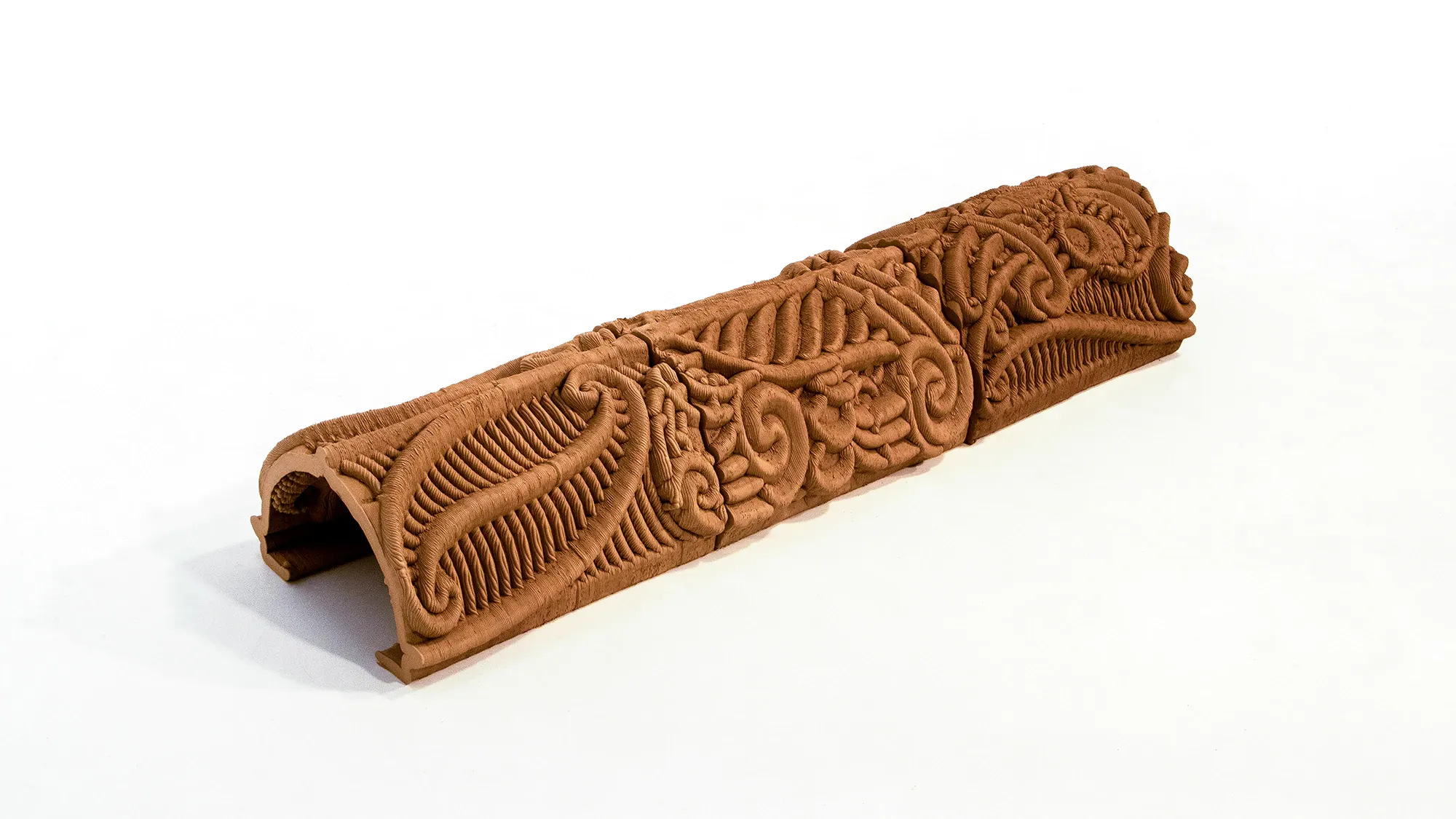
Dowse Ceramics Award winner Of the Land by Angus Horne. Photo: Supplied.
